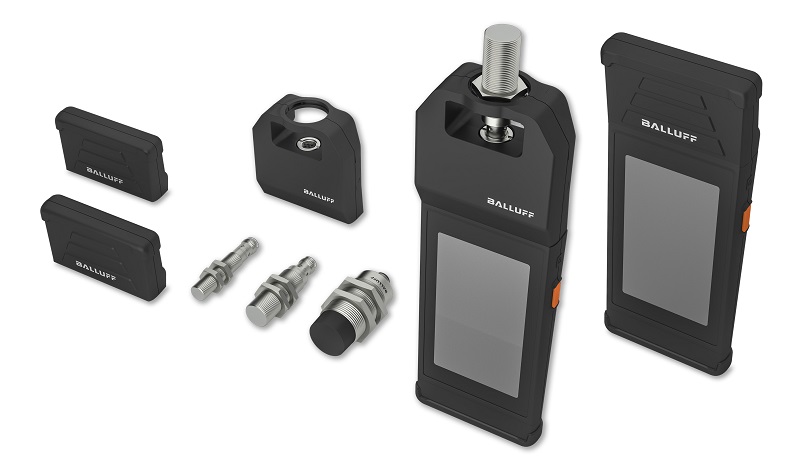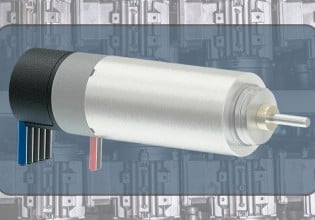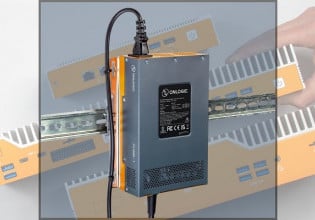Balluff’s New Scanners Provide Flexible Experience for Enhanced Traceability
Balluff introduced its latest 1D/2D scanners for manufacturing, warehousing, and logistics, seeking to enhance traceability and improve efficiency in production and order fulfillment.
Balluff Inc. announced the release of its newly developed BIS V radio-frequency identification (RFID) handheld scanners, also equipped to read 1D and 2D inventory and tracking codes. Customers can configure the scanners using three base unit variants, allowing for application flexibility when considering low, high, or ultra-high frequency communications and different methods of barcode reading.
Balluff adds this product to an extensive catalog of industrial sensing and other automated solutions, offering human-machine interfaces, RFID systems, magnetic and photoelectric sensors, and power supplies to its global network of customers.

RFID technology provides greater visibility for manufacturers and distributors, allowing them to keep track of stock, asses and improve shipping times, and overall, boost productivity. Image used courtesy of Balluff
Enabler for Smart Factories
RFID tags or transponders are devices containing a small antenna and microchip that stores object-specific data, enabling communication or transmission of data. An RFID read/write device has access to the information stored by the RFID tag and can transmit this data to a programmable logic controller or larger MES or inventory management system. Each transponder has its own unique RFID number to enable monitoring, tracking, and flexibility throughout the production process.
Improving Production Visibility
RFID tags are frequently used by manufacturers to monitor raw materials, work-in-process (WIP), and finished goods in their manufacturing processes. RFID scanners can read tags on goods fast, delivering real-time data concerning the number, location, and current state of goods and supplies in a manufacturing plant.
RFID is commonly employed to provide a link between the output products with particular quality control and process data. Scanning RFID-embedded goods allows for the identification of defects or any other anomalies that infringe upon quality standards.
RFID tags on WIP goods allow producers to track the status of individual items through several manufacturing phases, allowing for improved visibility and greater control.

Using Balluff’s new BIS V RFID handheld scanners, plus the existing range of read/write head and antenna modules, customers can configure a custom RFID system to suit their application needs. Image used courtesy of Balluff
Balluff’s BIS V RFID Handhelds
Balluff’s new RFID scanner comes with three base unit models to allow customers to add a camera, barcode scanner, and/or near-field communication (NFC) antenna which takes the form of a smartphone device. The design operates using an Android system users can access a configurable app for visualizing and editing data. The availability of a 1D/2D barcode reader allows for laser scanning or identification via a 2D imager. These options cater to different code types (like barcodes or the so-called ‘QR codes’) based on supply chain needs and specific industry requirements.
The base units are multi-frequency, accommodating low, high, or ultra-high frequencies. All RFID modules can be connected with currently available read/write heads. Customers can choose from Balluff’s portfolio of antennae and read/write heads to configure the system to particular frequency and compliance standards.
The devices incorporate a 5-inch touchscreen color display and an integrated app that may be used right away or adjusted to meet individual needs. Balluff supplies the API as well as all of the hooks required for a custom-designed application. A charging cradle for power provision is offered separately, along with spare batteries.
The BIS01FU base device features a quick-change, lithium-ion battery, 16 GB Flash storage, 2 GB RAM, Android 9.0 operating system, and NXP i.MX8M mini processor (4x Cortex A53, 1x Cortex M4). The IP65 rating affords a high level of protection against the ingress of dust and low-pressure jets of water from any direction.
Aiding Inventory Management
These RFID scanners are commonly used throughout warehouse facilities and distribution centers to track and maintain inventory levels. RFID tags embedded in items and added to allocated storage areas allow for real-time tracking, lowering the risk of stock shortages or overstocking.
Workers can utilize handheld or static RFID scanners throughout the order fulfillment process to swiftly discover and verify the correct products for customer orders. This increases efficiency and reduces errors throughout the selection process. Using RFID scanners helps pack and transport the correct items, improving order accuracy and ensuring end-consumer satisfaction with timely shipping.





